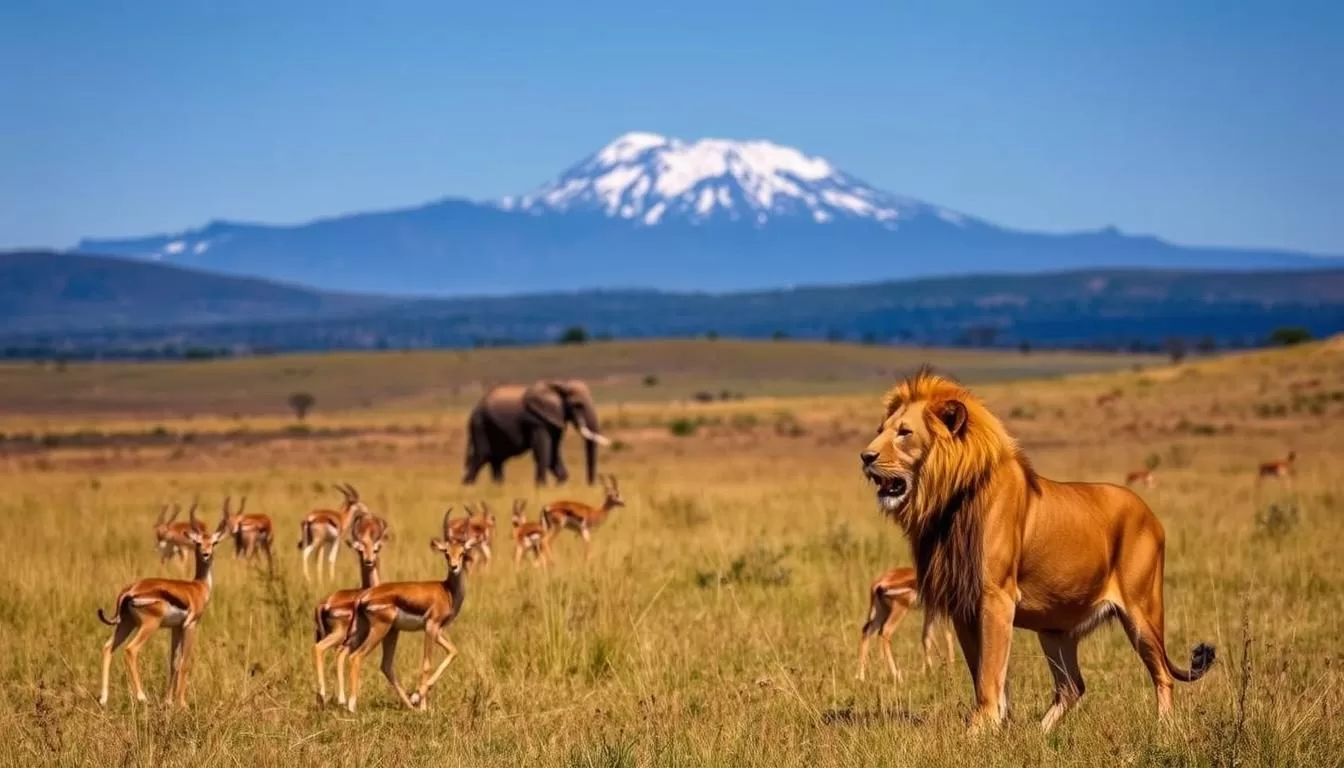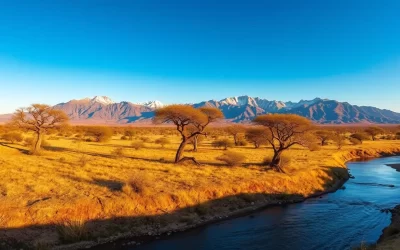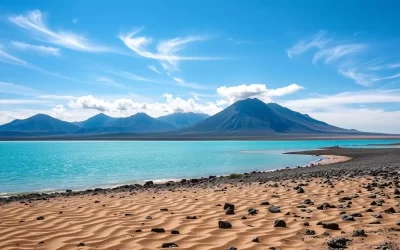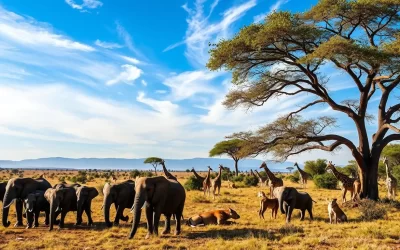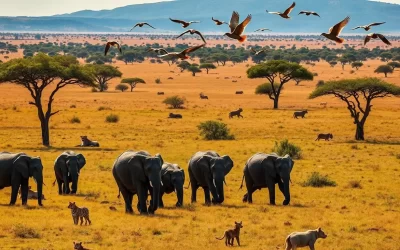✓ Accommodations✓ Flights✓ Rental Cars
Discover the unspoiled beauty of Meru National Park, a hidden gem in Kenya’s wildlife scene. Known for its diverse landscapes and rich biodiversity, this park is the setting for Joy Adamson’s renowned book “Born Free” and the home of Elsa the Lioness. Unlike other Kenyan parks, Meru remains less crowded, offering a more intimate wildlife experience.
As you plan your visit, you’ll find a range of activities to enjoy, from exciting safaris to cultural visits. This guide will provide you with comprehensive information on what to do, when to visit, and practical tips for making the most of your adventure.
Discovering Meru National Park: Kenya’s Hidden Gem
As you venture into Meru National Park, you’re stepping into a world rich in biodiversity and conservation legacy. This park is not just a wildlife reserve; it’s a place where history and nature entwine.
Location and Geography
Meru National Park is located in the eastern part of Kenya, covering an area that encompasses a variety of landscapes, from semi-arid to lush riverine forests. The park’s diverse geography supports a wide range of flora and fauna, making it a unique destination for nature lovers. The park’s landscape is characterized by its rugged terrain, with rocky outcrops and the occasional hill, such as Mugwongo Hill, adding to its natural beauty.
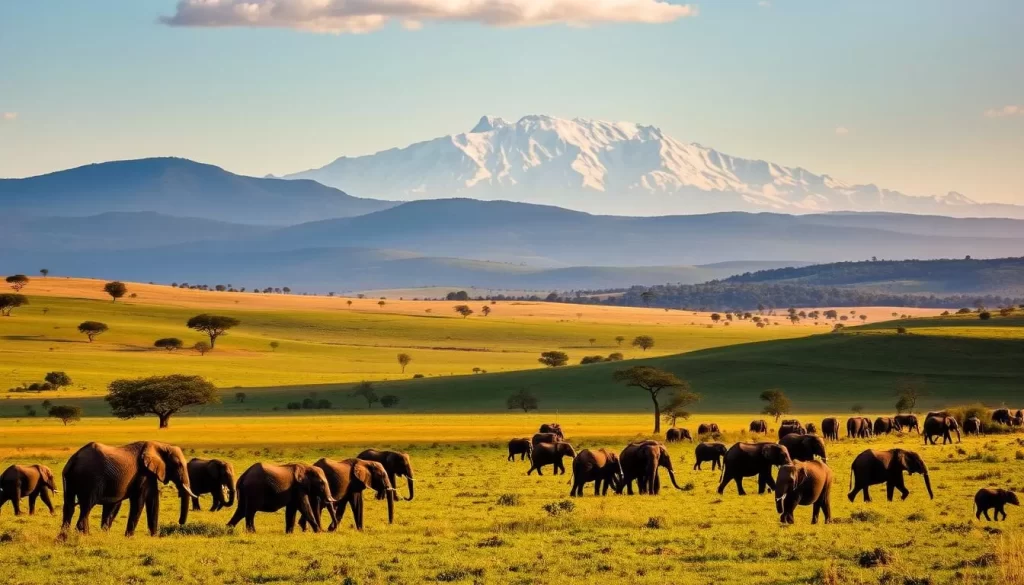
Historical Significance: The Home of Elsa the Lioness
Meru National Park holds a special place in the history of wildlife conservation, particularly due to its association with Joy Adamson and her famous lioness, Elsa. The Adamsons’ groundbreaking work with Elsa, as chronicled in the best-selling book “Born Free”, took place in this very park. Elsa’s story, which was later adapted into an award-winning movie, has inspired generations of conservationists and wildlife enthusiasts. Visitors to the park can pay their respects to Elsa at her gravesite, where part of Joy Adamson’s ashes were also scattered. The legacy of the Adamsons continues to be celebrated at Elsa’s Kopje, a lodge named in honor of the beloved lioness, offering a unique blend of conservation history and luxury accommodation.
The work done by George and Joy Adamson at Mugwongo Hill, where they rehabilitated orphaned lion cubs, marked a significant milestone in wildlife conservation. Their pioneering efforts not only saved countless lives but also changed global perspectives on how to interact with and protect wildlife. Today, visitors can experience the emotional connection of being in a place where such significant conservation history was made.
Wildlife Encounters in Meru National Park
As you venture into Meru National Park, you’ll discover a world of wildlife encounters. The park is renowned for its diverse wildlife, including the Big Five and a wide variety of bird species.
The Big Five and Beyond
Meru National Park is home to the Big Five: lion, leopard, rhinoceros, elephant, and Cape buffalo. In addition to these iconic animals, the park is also inhabited by other remarkable species, such as cheetahs, hyenas, and antelopes.
The diverse habitats within the park, ranging from riverine forests to open grasslands, support a wide range of wildlife. This diversity makes Meru National Park an exciting destination for wildlife enthusiasts.
| Animal | Habitat | Notable Features |
|---|---|---|
| Lion | Grasslands | Known for their majestic manes |
| Leopard | Forests and trees | Recognized by their distinctive spots |
| Elephant | Various habitats | Large size and memory |
Bird Watching Paradise: Over 300 Species
Meru National Park is a bird watcher’s paradise, with over 300 recorded species of birds. The park’s diverse habitats, including swamps and riverine forests, attract a wide variety of birdlife.
Some of the notable bird species you may encounter include the African finfoot, Pel’s fishing owl, Somali ostrich, and Kori bustard. The park is also a stopover for migratory birds like Eurasian bee-eaters and rollers between October and March.
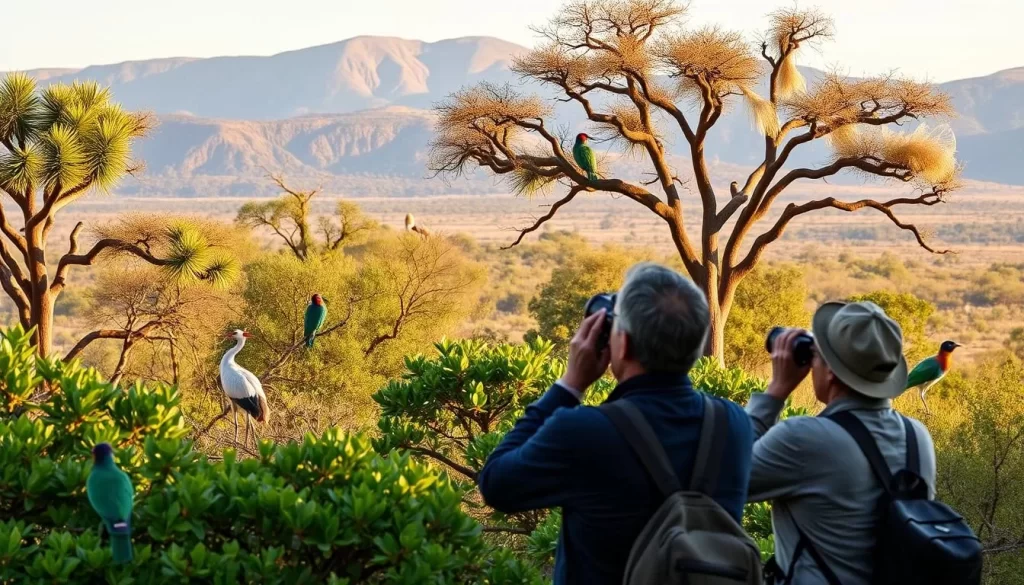
The dense vegetation along the riverbanks and in the swamps makes bird watching both challenging and rewarding. With patience, you can spot many of the park’s bird species.
Top Things to Do in Meru National Park
As you explore Meru National Park, you’ll find numerous opportunities for adventure and nature connection. The park’s diverse landscapes, rich wildlife, and historical significance make it a unique destination for travelers.
Game Drives Through Diverse Landscapes
Game drives are a primary attraction in Meru National Park, allowing you to witness the Big Five and other wildlife in their natural habitats. The park’s diverse landscapes, from open plains to dense woodlands and riverine areas, provide a varied backdrop for your safari experience.
During a game drive, you might spot lions lazing in the shade, elephants roaming freely, or leopards perched in trees. The park’s guides are knowledgeable, ensuring you make the most of your wildlife viewing experience.

Visiting the Rhino Sanctuary
Meru National Park is home to a Rhino Sanctuary, dedicated to the conservation of these magnificent creatures. Visiting the sanctuary, you’ll learn about the efforts to protect and increase the rhino population.
The sanctuary provides a safe haven for black and white rhinos, and you may get the chance to see these animals up close during your visit. The conservation efforts here are crucial for the survival of the species.
Exploring Adamson Falls and Elsa’s Grave
One of the exciting things you can do at Meru National Park is visit Adamson Falls and the grave of Elsa the Lioness. This park became famous due to the book “Born Free” by Joy Adamson, which tells Elsa’s story.
- Visit the emotionally moving site of Elsa’s grave, creating a powerful connection to conservation history.
- Experience the natural beauty of Adamson Falls, a scenic waterfall named after the pioneering conservationists.
- Take guided bushwalks through the untapped wilderness surrounding these historical sites.
- Learn about the conservation legacy of George and Joy Adamson.
- Capture stunning photographs of the rugged landscape.
Unique Experiences in Meru National Park
Beyond the wildlife, Meru National Park provides a rich tapestry of experiences that immerse you in its natural and cultural heritage. As you plan your visit, consider the diverse activities that make your safari truly unforgettable.
Fishing Safaris on the Tana River
The Tana River offers an exciting opportunity for fishing safaris, where you can try your hand at catching some of the river’s abundant fish species. This activity provides a relaxing contrast to the excitement of game drives.
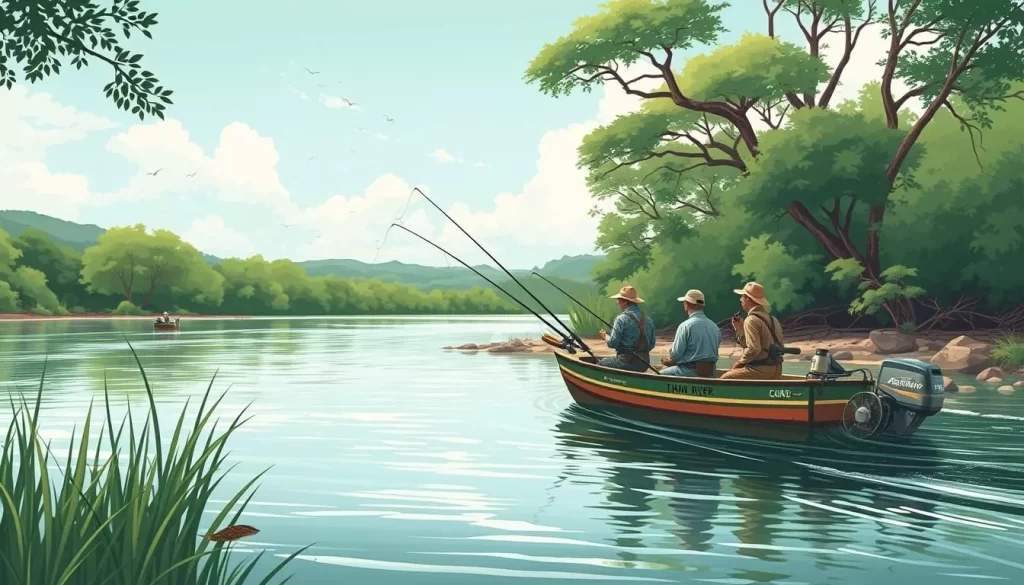
Hiking Mugwongo Hill
For those who enjoy hiking, Mugwongo Hill is a must-visit destination within Meru National Park. The hike offers panoramic views of the surrounding landscape and an opportunity to explore the local flora and fauna up close.
Cultural Visits to Local Communities
Visiting Meru National Park isn’t just about the wildlife; it’s also a chance to immerse yourself in the rich culture of the local communities, especially the Tharaka people who live nearby. During your cultural visit, you can experience traditional music, dance, and local customs, providing a deeper understanding of their way of life.
- Immerse yourself in authentic cultural experiences with visits to the Tharaka communities living near Meru National Park, adding a human dimension to your wildlife safari.
- Participate in traditional music and dance performances that showcase the rich cultural heritage of the local people who have lived alongside the park’s wildlife for generations.
- Learn about traditional customs, crafts, and sustainable living practices that have allowed these communities to thrive in harmony with their natural environment.
- Support community-based tourism initiatives that provide economic benefits directly to local people while preserving their cultural traditions.
- Gain deeper insights into conservation challenges and solutions from the perspective of those who live adjacent to the park, understanding the complex relationship between wildlife protection and human needs.
These unique experiences enrich your visit to Meru National Park, making your safari a memorable and holistic adventure that combines wildlife, nature, and culture.
Best Time to Visit Meru National Park
Meru National Park is a year-round destination, but the experience varies with the seasons. Understanding the seasonal changes can help you plan your visit to maximize your wildlife encounters and overall experience.
Dry Season: Prime Wildlife Viewing
The dry season is considered prime time for wildlife viewing in Meru National Park. During this period, animals tend to congregate around water sources, making them easier to spot. The dry conditions also make the roads within the park more accessible, enhancing your game drive experience.
The dry season typically occurs from June to September and January to February. This period is ideal for those who want to see the Big Five and other wildlife in a relatively comfortable setting.
Wet Season: Lush Landscapes and Birdwatching
The wet season, on the other hand, transforms the park into a lush, vibrant landscape. This season, which occurs in March to May and October to November, is particularly attractive for birdwatching enthusiasts. The rainy seasons bring in migratory birds, increasing the variety of species you can observe.
The rain creates temporary swamps and fills seasonal streams, providing new habitats for wildlife. However, the wet conditions can make some areas of the park less accessible, so it’s essential to be prepared.
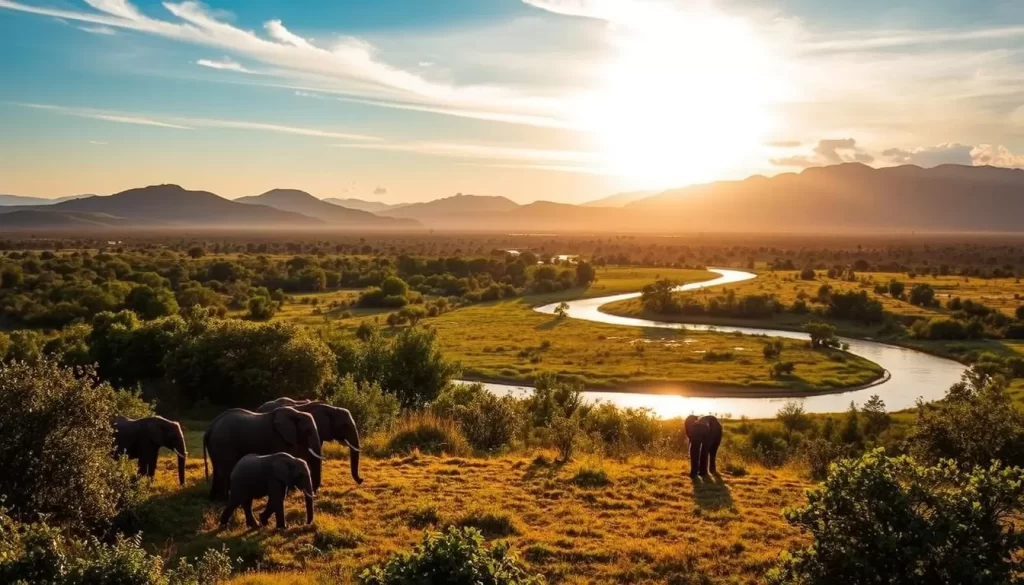
| Season | Activities | Conditions |
|---|---|---|
| Dry Season (Jun-Sep, Jan-Feb) | Game drives, wildlife viewing | Dry roads, comfortable weather |
| Wet Season (Mar-May, Oct-Nov) | Birdwatching, photography | Lush landscapes, potential road challenges |
Regardless of the season you choose to visit, Meru National Park offers a unique experience. The park’s proximity to Mt. Kenya and the Nyambene Hills results in varied rainfall across the park, with the western part receiving more rain (635-762mm) than the eastern part (305-356mm). This variation creates diverse conditions throughout the year, making every visit different.
Practical Information for Your Visit
Planning a trip to Meru National Park requires some practical information to ensure your visit is as enjoyable as possible. To make the most of your wildlife safari, it’s crucial to be prepared with the right information about getting to the park and where to stay.
How to Get to Meru National Park
Meru National Park is located in the eastern part of Kenya. The most convenient way to get to the park is by flying into Nairobi’s Jomo Kenyatta International Airport and then taking a domestic flight to Meru or Isiolo. From there, you can charter a flight or drive to the park. Alternatively, you can drive from Nairobi or other major cities, although this might take longer.
Accommodation Options
Tourists planning a wildlife safari at Meru National Park have a variety of accommodation facilities to choose from, catering to every need and budget. The options range from budget-friendly campsites and bandas to luxury lodges.
For a luxurious experience, consider Elsa’s Kopje Lodge, which is built into the rock where Joy Adamson’s original camp once stood, offering spectacular views and world-class amenities.
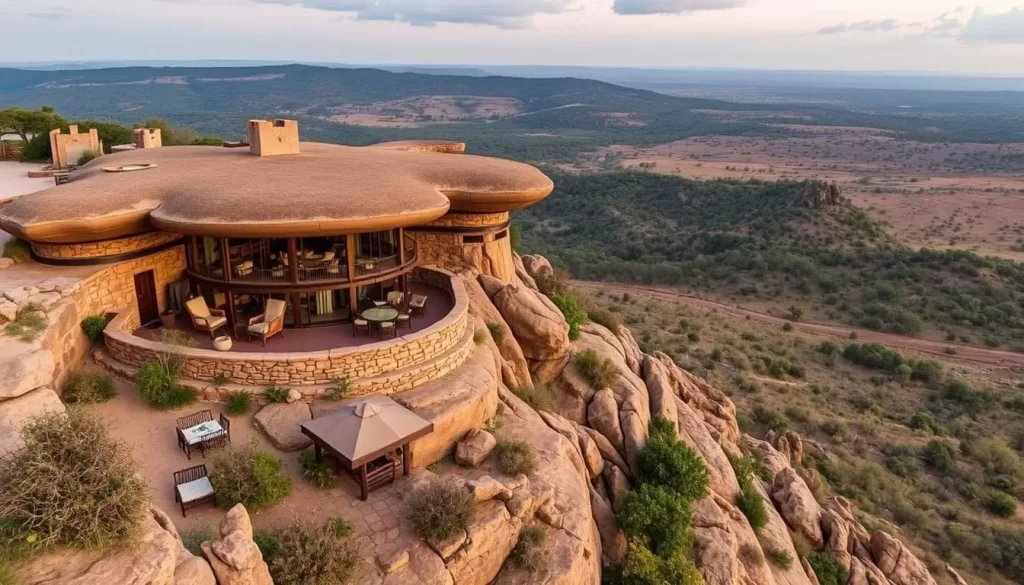
Mid-range accommodations like Leopard Rock Lodge and Rhino River Camp provide comfortable stays with excellent wildlife viewing opportunities.
For those on a tighter budget, the park’s Bwatherongi and Murera Bandas and various campsites such as Kampi Baridi, Rojoweru, Mugunga, Kanjoo, and Ken Mare offer an authentic wilderness experience.
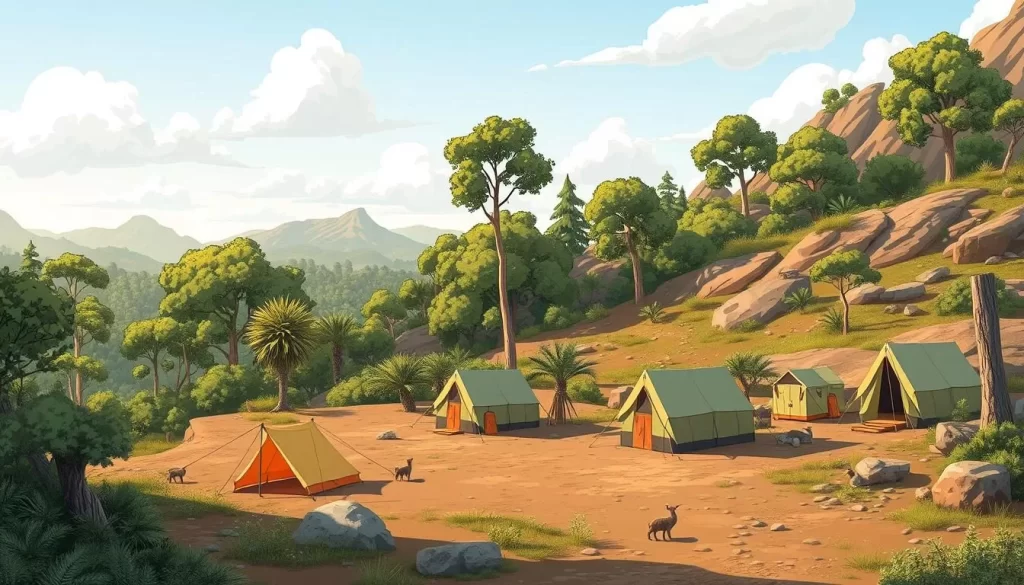
Additionally, visitors can opt to stay in nearby Meru town at hotels like Meru Slopes Hotel and Blue Towers, which serve as convenient bases for day trips into the park.
Conclusion: Why Meru National Park Should Be on Your Kenya Itinerary
With its rich history, diverse wildlife, and stunning landscapes, Meru National Park stands out as a unique safari destination. This park is not just known for being the setting of Joy Adamson’s “Born Free” but also for its diverse terrains and wide range of wildlife and bird life. You can enjoy vast tracts of wildlife-filled landscapes almost entirely to yourself due to the lower visitor numbers. The park’s diverse ecosystems support more animal species than even the Masai Mara, making it a must-visit for any Kenya safari itinerary.
The above is subject to change.
Check back often to TRAVEL.COM for the latest travel tips and deals.
